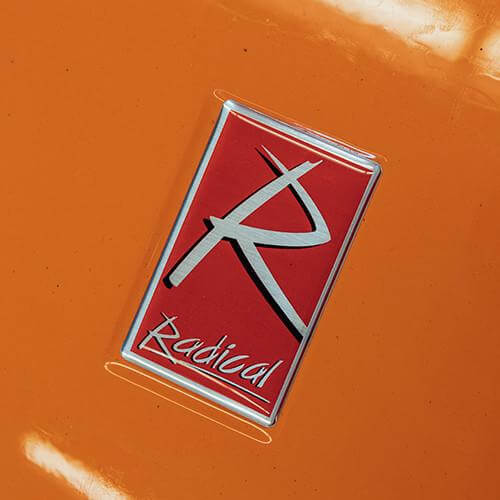Just like with a street car, the oil in a racecar must be changed at a specific frequency. Where a street car may require an oil change every 3,000 to 5,000 miles, a racecar requires its oil to be changed more frequently using a specialized motor oil. The exact type of motor oil depends on the age of the car’s engine and what the car will be doing.
Here is an example of how what the car is doing influences when the oil is changed:
Typically, a crew will place a lighter oil in the car for its practice run. A practice run is usually around two laps. After the practice run, the heavier and more dependable oil is put back in the car before any actual racing. In a single weekend, this process can be repeated twice.
Making Gains with Your Motor Oil
Anyone who drives a car knows the important role engine oil plays, but the type to use can be confusing. Believe it or not, synthetic oil may be your best bet. Although synthetic means it isn’t real oil, you can experience some great gains.
However, you want to make sure mineral-based oil is put in the engine when it’s new. This helps the rings set. Once the rings are set, the best oil to use is synthetic premium-blend oil. While mineral-based oil may seem better because it is real, synthetics lubricate better. The viscosity is lower, and it holds up against heat. It doesn’t gum up, and it simply works more efficiently in your engine.
Put mineral-based oil up against synthetic oil using a dynamometer, and an already broken-in engine will show a 5-horsepower gain when using synthetic oil. It is also possible to lower the weight of the oil, but care should be taken here. Before you change the weight of the oil, make sure you ask the engine builder if that is wise. You may find out that it isn’t a good idea to lower the weight, and that can be surprising, which is why it doesn’t hurt to ask.
How Racing Oil Is Different from Street Oil
The kind of oil is also important. You don’t want to put street car oil in a racecar. The base oil chemistry is very different. Additive packages have much to do with this because of how they contribute to the efficiency of lubrication.
Racing oil protects against friction, rust, corrosion, and a wide range of other things. The oil makes sure the engine stays clean and that it functions the way that it is supposed to. Racing oil protects the engine through its heavily fortified additives. These additives are present at higher concentrations than in street oils. The oils are also created without necessarily taking emissions into account.
Some of the late-model cars can use over-the-counter oils. They have evolved over time to accommodate some of the more contemporary operating conditions, such as improved emissions and preservation of the catalytic converter. Because of the fewer high-friction challenges contemporary engines face, the over-the-counter oils don’t have to possess the anti-wear qualities that engines once required. Older racecars are at risk using these newer motor oils because they have high valve spring pressures and flat-tappet cams. Even attempting to put a contemporary oil in an older engine can prematurely wear the engine and cause performance issues.
What Is in an Additive Package?
As for what makes up an additive package, the American Petroleum Institute works with the automakers to create chemistry restrictions and other standards. This allows for consistency within the motor oil industry. This means that additive packages are very similar.
Of the additives in the package, zinc, sulfur, and phosphorus are the most common. These are considered anti-wear additives. Zinc doesn’t provide a direct benefit, but the other compounds that contain it result in protection against temperature, high pressure, and sliding surfaces that are highly loaded.
Phosphorus can be harmful to the catalytic converter, which is why it is only found in an anti-wear additive package. The phosphorus restriction affects the entire additive. However, this isn’t as much a concern in newer engines as it is in the old engines. The reduced need for newer engines to have anti-wear additives is why it isn’t such an issue. It has also resulted in more uniform formulation between the motor oil companies.
Risks of Not Changing Your Oil
Now that you know why racecar motor oil is important, you should also know what happens if you don’t properly change your oil. It is not something you ever want to experience because you could face a very expensive issue, such as prematurely worn parts due to poor lubrication.
You also have to consider that racecar oil becomes dirty very quickly. Dirty oil is abrasive on the engine. If the oil isn’t changed, there is no way it can do its job. The oil cleans and cools the engine, but it can’t do that if it is contaminated. The worst-case scenario is the engine locking up and needing extensive repairs or replacement. This could also be a very serious safety issue. Replacing the oil as it should be replaced is a much less expensive and frustrating matter than having to take the car off the track while the car is being repaired.
Oil Is Your Friend
All in all, your racecar motor oil is your friend. You can’t have an efficient and winning racecar without the right oil changed at the right frequency. Also, remember that it is best to speak to the engine builder about the weight of the oil so the incorrect weight isn’t used. By doing everything right, you ensure that all parts are lubricated, the engine performance is optimal, and the engine stays clean and cool. An engine that is well cared for is an engine that is at its best.
Reach out to Team Stradale to learn more about the importance of oil maintenance.



